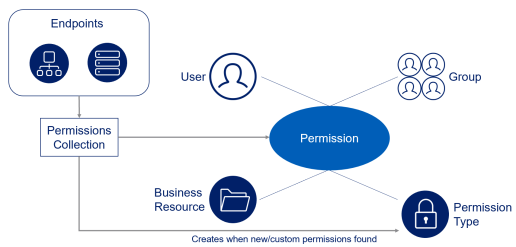Crawling Overview
Crawling is the process that discovers the business resources (BRs) of a specific application type. It is the first task involving an application, since BRs are required for many other activities involving applications, such as Permissions Collection and Access Certification.
For example, a crawler may discover folders (BR) on a file server (an application type), or mailboxes and folders (BRs) on Exchange (an application type).
Before beginning the crawling process, you must install and run the permissions collection service for each application.
The crawling process involves the following:
- Discovery of business resources and the population of a BR tree
- Business resource size calculation
| File Name | File Type | Size |
|---|---|---|
| Finance Balance Sheet.xls | Excel (*.xls) | 2 M |
| Finance Salaries.docx | Word (*.docx) | 1 M |
| Finance Departments.txt | Text (*.txt) | 3 M |
| Finance Organization.ppt | PowerPoint (*.ppt) | 5 M |
| Finance Other Files | (An uncommon file type) | 4 M |
- Summary of business resource size by file type
| Category Name | Size |
|---|---|
| Office Files | (2M + 1M + 5M) = 8M |
| Text Files | 3M |
| Finance Other Files | 4M |
The Business Resource Trees display the results of crawling in various locations in File Access Manager.
Interaction of Crawling with Permissions Analysis
The permissions analysis process, in brief:
-
The crawling process collects applications BRs.
-
In parallel, the Identities Collector collects users and groups (which may occur before the crawler collects the BRs, since these collections are unrelated).
-
The Permissions Collector collects the BRs, users, and groups, and associates them with permission types to create permissions.
